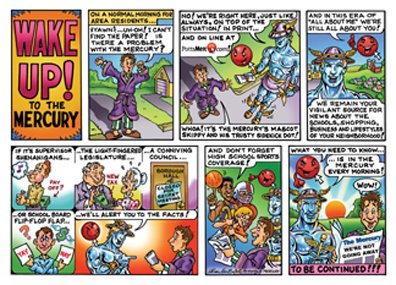“You should write a book.”
As a former courthouse reporter, I have heard those words more than once when recounting news events I have covered.
There was the murder trial for a babysitter who scalded to death the child of an up-and-coming Philadelphia TV broadcasting personality in Phoenixville.
The Spring City teen who set her family’s house on fire and then watched while flames raged, killing her parents and brothers inside the home.
And, there was the gang of thieves who stole tractors in southern Chester County, fenced them in the Pottstown and Boyertown areas, and along the way, murdered six people to prevent them from testifying.
The news story of Bruce, David and Norman Johnston was book material from the beginning.
Thirty years after covering the murder trials, my friend and former reporting competitor Bruce Mowday has finally written it. “Jailing the Johnston Gang” is a 252-page true-crime story that includes “how a stream of stolen goods and a gnawing fear of law enforcement grew to envelope the Pottstown area in a saga of five murders.”
I wrote those words in February, 1980, as part of a news story in The Mercury that focused on the northern connection of the Johnston gang. The story was part of six weeks of trial coverage in Ebensburg, Cambria County, where the case was moved because of too much publicity here.
The Johnstons’ story first made headlines in regional newspapers in late August, 1978, when young Bruce Johnston Jr., 19, and his girlfriend Robin Miller, 15, were shot in an ambush at the Miller home in southern Chester County. The story had Bonnie-and-Clyde drama and made headlines in the city papers and The Daily Local News of West Chester, where Mowday was the courthouse reporter.
At the time, I also covered Chester County courts for The Mercury, a reporting concentration mixed in with Pottstown schools and general news writing assignments.I traveled to West Chester one day a week to cover county commissioners meetings and pick up on any juicy court news or lawsuits. If a trial involving a local person was going on, I shifted into everyday coverage for the duration.
I recall reading every word of other papers’ coverage of the Miller murder, looking for a local angle to tap. I didn’t have to wait long. A few weeks later, I answered the phone in the back row of the newsroom receiving a call from Lt. Richard Weimer, commander of the Avondale barracks of state police, asking for The Mercury’s help in getting information to the public about a Pottstown area fencing ring linked to the Johnstons.
“The area we are investigating is like a wheel with the borough as the hub,” a state police investigator told me. “We are going into the townships around Boyertown, Oley, Birdsboro, Limerick and in northern Chester County.” Investigators had already recovered $90,000 in farm implements, and police wanted people to know they were knocking on doors of area residents, looking for more.
The Johnston brothers used the Pottstown area as a market in which to sell their stolen goods. Edward H. Otter, formerly of Douglass (Berks) Township, testified at the Johnstons’ 1980 trial that he had been fencing stolen goods for them for about 10 years. They first met at a Stowe auto body shop and had in common a love of fast cars and easy money.
The Johnstons used a group of teen-agers they called “the kiddie gang” to steal lawn tractors out of barns and garages in the rural area of southern Chester County, and the older brothers then transported the tractors to Otter and others, who sold them to neighbors and friends. One of the fences worked at the former Firestone plant in Pottstown. It was common knowledge around the area that if you wanted a good deal on a John Deere tractor, Otter and his associates could get it for you, Otter testified.
After the Miller ambush murder, state police investigators, the Chester County detectives and the FBI formed a task force and closed in on the Johnstons. A team from the task force spent weeks tracking down stolen goods around the Pottstown and Boyertown areas, recovering tractors from homeowners throughout the region.Mowday’s book, published by Barricade Books and available in area bookstores, is not the first mass-audience account of the Johnstons’ story. A movie, “At Close Range,” was made in the years after the trials, starring Christopher Walken as Bruce Sr. and Sean Penn as Bruce Jr.
In one of the first hearings I attended on the case in 1978, I witnessed a helicopter landing in the parking lot of a courtroom delivering the witness Bruce Johnston Jr. from the federal witness protection program. Johnston was brought into court with a coat over his head, flanked by armed federal marshals to protect against a hit. That scene opens the movie.Mowday’s book follows the concentrated effort of police and federal investigators that resulted in the unraveling of the Johnston gang. The story is more than a great crime-solving yarn, Mowday says. While the crimes committed by the Johnstons are captivating, the parallel story of how the law enforcement community worked together to bring them to justice is the greater message, according to the author.
Mowday conducted interviews over several years before writing the book, and he said every person involved remembers the Johnston investigation as the high point of their careers and the most interesting, involving work they have ever done.
I would say the same about my reporting career, a sentiment I share with Mowday. He was closer to the action than me, called out late at night by an unidentified caller, who said,, “They have one body out of the ground and hope to have three more by morning,” referring to a cooperating witness directing investigators to places where murder victims were secretly buried.
Mowday was such a fixture at all the trials that he had his own nickname to distinguish him from the two criminals with whom he shared a first name. There was Big Bruce, Little Bruce and Local Bruce.
I was just the girl form the Pottstown paper. My stories took a different angle, starring the local people and places on the northern front of the Johnston gang activity.
Details often hit close to home. Otter and another of the fences, David Schoenly, lived on the same road where I grew up. At the hearings and trials I was covering, witnesses described murder threats and plots that took place at the kitchen table of a home a mile from where my parents lived at the time.
Testimony that the payment for shooting a 16-year-old boy between the eyes was getting the killer’s car fixed “at a Gilbertsville body shop” was unnerving. David and Norman Johnston were convicted of killing five witnesses. Both are serving life sentences in Pennsylvania prisons. In 1999, Norman Johnston escaped from the state prison at Huntingdon, using tools smuggled into him from the outside. He was on the run 18 days before being captured back in Chester County where it all began.
Bruce Johnston Sr., the gang ringleader, was convicted of killing six people. He died in 2002 while an inmate at Graterford prison.
The personalities and the timeline of the Johnstons’ crimes were great fodder for news stories – perhaps not the most important, but certainly the most captivating I have ever written.Great fodder for a book, too.“Local Bruce” took 30 years to get it done, but he still beat me to it.
That’s what good reporters do.
“Jailing the Johnston Gang: Bringing Serial Murderers to Justice” is available in area bookstores or from the author Bruce Mowday at
mowday@mowday.com or 610-873-0727.


 I expect not to cry at work. As a female manager in an office with glass walls, it’s important to keep emotions in check.
I expect not to cry at work. As a female manager in an office with glass walls, it’s important to keep emotions in check.